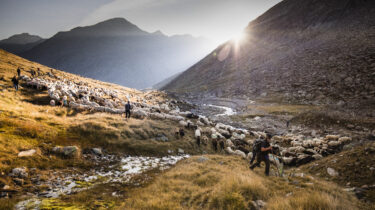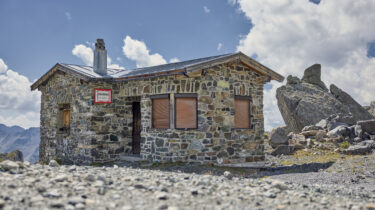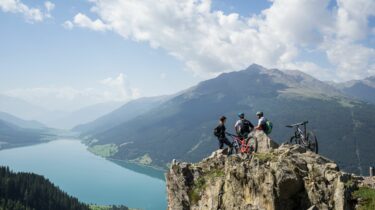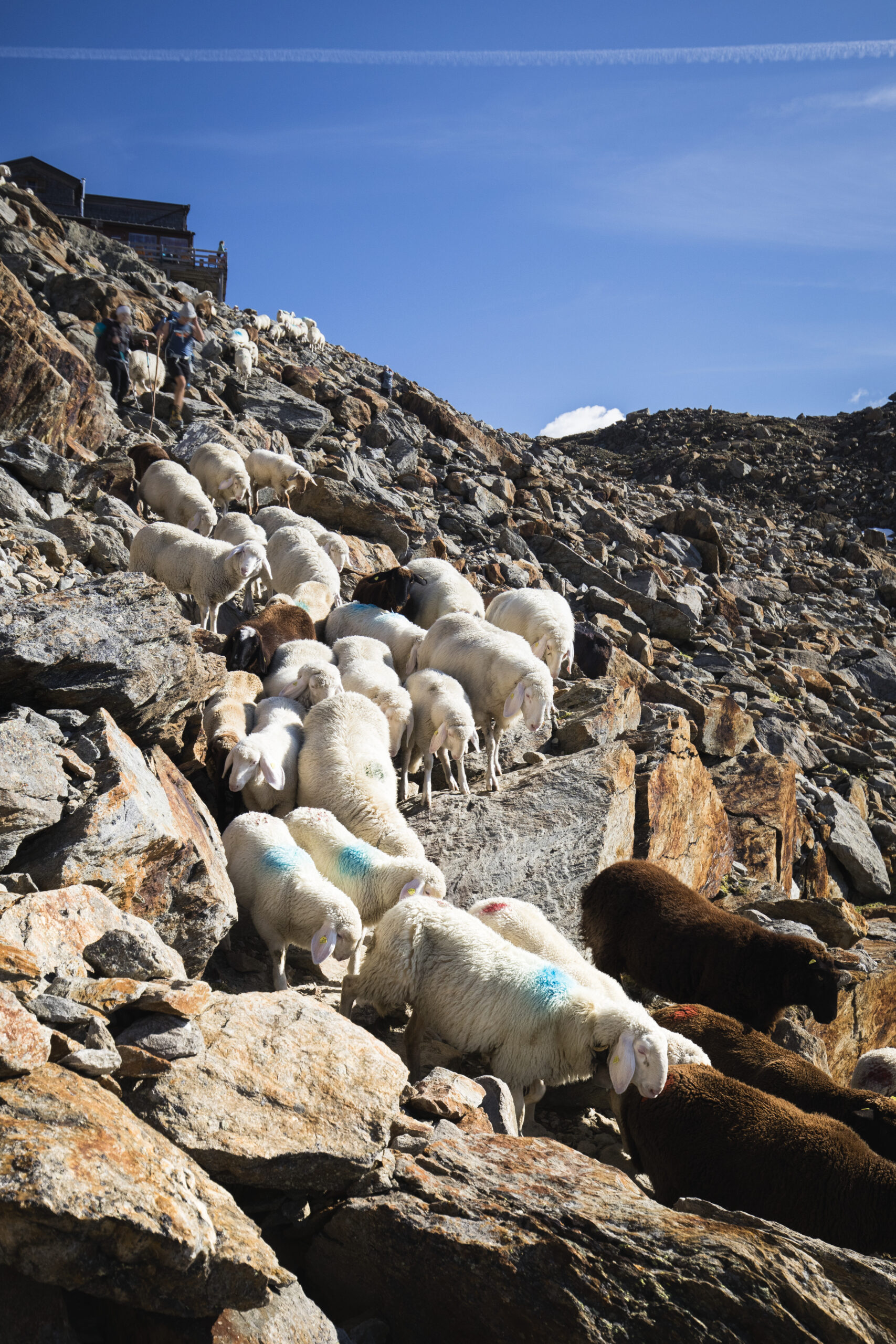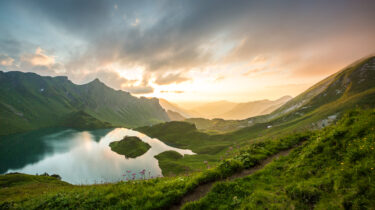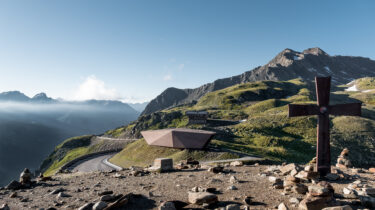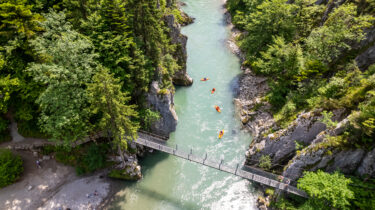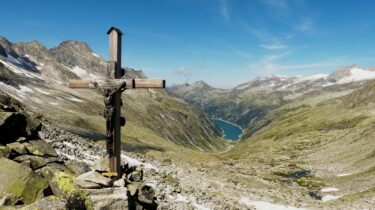Tours and adventures in Tirol and its neighbouring regions: transcending borders
Last updated on 13.05.2024
Travelling often involves crossing borders: not only in a social, linguistic and cultural sense, but also geographical perimeters. Tirol offers a multitude of such experiences, as the popular holiday destination borders on several neighbouring European and Austrian federal states.
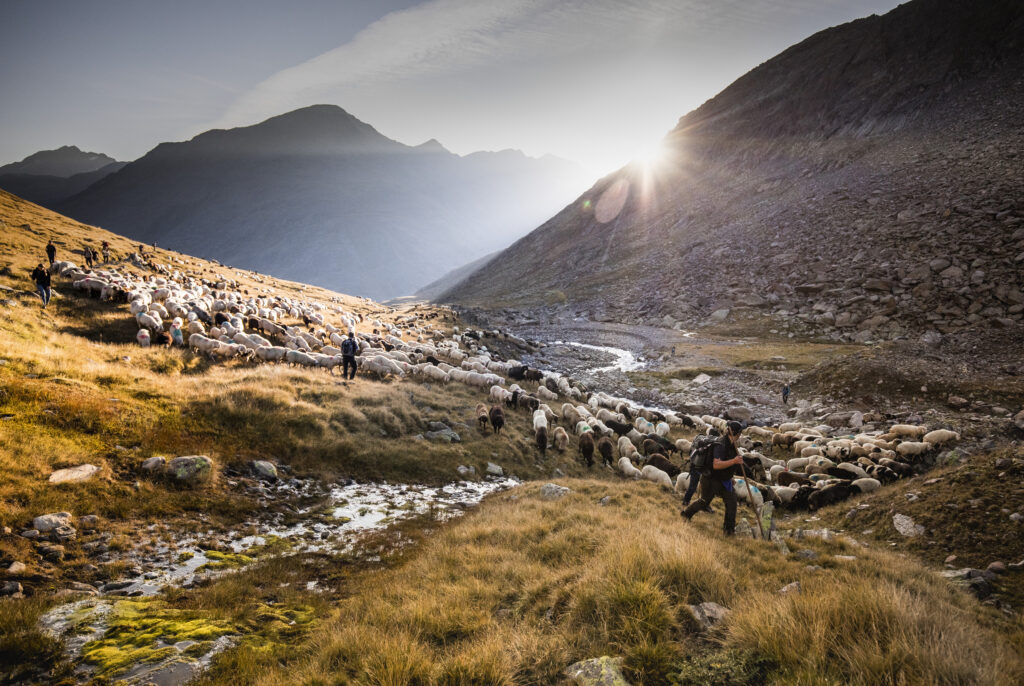
Let’s start with a few facts: the national border between Tirol and Bavaria is 358 kilometres long, while a 311-kilometre state line separates Tirol from Südtirol. The Austrian state of Salzburg divides Tirol into North and Osttirol, while within Austria itself, the heart of the Alps also neighbours Vorarlberg and Carinthia. In addition to Germany and Italy, the province also borders with neighbouring Switzerland. Thanks to its unique location, Tirol served for many years as an intersection between important north-south and east-west transit routes.
Interest in Tirol as a holiday region, however, began to grow slowly at the turn of the 20th century. Many sporting and cultural activities have developed since. Ones that make it possible to experience and transcend the geographical borders. Here, an overview of a few selected activities:
Sporting frontier adventures
Hiking in the footsteps of former smugglers
In bygone days, smugglers used unsecured and hidden paths in the Alps to smuggle goods such as tobacco, alcohol, coffee and sugar, as well as livestock, across the border to escape tolls otherwise imposed by customs officers. Today, some of these formerly dangerous routes can be explored along modern hiking trails.
One of these is the Ahrntal Smugglers’ Trail, an 80-kilometre circular, multi-day route that starts and ends in Mayrhofen in the Zillertal Valley and leads over two Alpine pass crossings to the neighbouring Ahrntal valley in Südtirol and back again. As they traverse these ancient smugglers’ trails, hikers’ efforts are rewarded with high alpine views of lush green meadows, clear mountain lakes and glaciers.
The Samnaun Smugglers’ Tour in the Paznaun Valley is another impressive experience. The tour leads from Ischgl to the Samnaun customs exclusion zone on Swiss territory. As the price difference for luxury goods such as alcohol and cigarettes was once so prohibitive, smugglers trafficked these goods from Switzerland to Austria. Today, the themed hike is not only a memorable experience because of the impressive mountain scenery, the ride on the double-decker gondola in Samnaun adds a special touch to the tour.
On the border between Bavaria and Tirol, ancient Celts used the old Samerweg Route – a transport route for farmers and their packhorses – to smuggle copper and bronze. The trail was later used to transport wine and salt and was also used to smuggle cigarettes, coffee and alcohol into Austria. Today, the Klobenstein Smugglers’ Trail in the Kaiserwinkl region features breathtaking viewing platforms, romantic resting spots and a 20-metre-long suspension bridge, making it a very special experience.
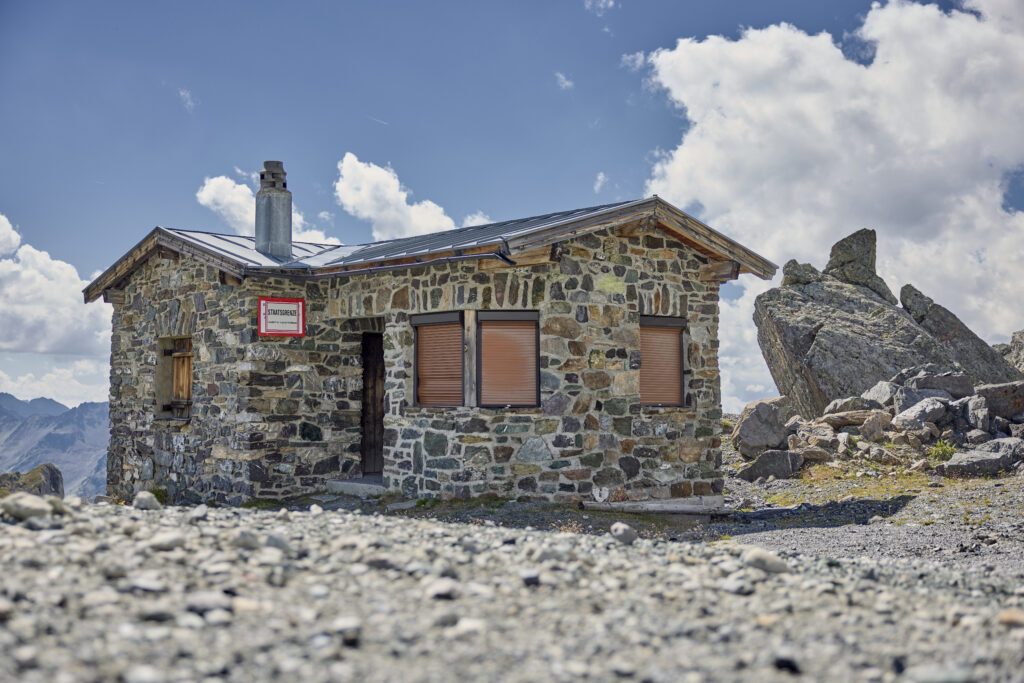
Crossing borders on two wheels
In Nauders in the Tirolean highlands, you will find the Reschen Pass plateau, the Vinschgau Valley and Switzerland in what is known as the 3-Country Bike Arena. MTB enthusiasts traverse at least one and usually even two national borders on the panoramic and action-packed 3-country enduro trails. Time and again, you will encounter anti-tank barriers and historic bunkers – relics from the pre-World War II era.
Border-traversing cycle trails for leisure cyclists may be less action-packed, but are certainly no less scenic and spectacular, such as the historic Via Claudia Augusta, which leads 130 kilometres from Bavaria across Tirol to Südtirol, following in the footsteps of the ancient Romans. The Munich-Venezia long-distance cycle route also crosses the borders between Germany, Austria and Italy and extends over a length of 560 kilometres from the Bavarian capital via Lake Achensee, the Inntal Valley and Wipptal Valley, before heading over the Brenner Pass to Italy. Further east, the 366-kilometre Drau Cycle Path leads from the source of the River Drau in Südtirol for 50 kilometres through Osttirol and on via Carinthia to Slovenia.
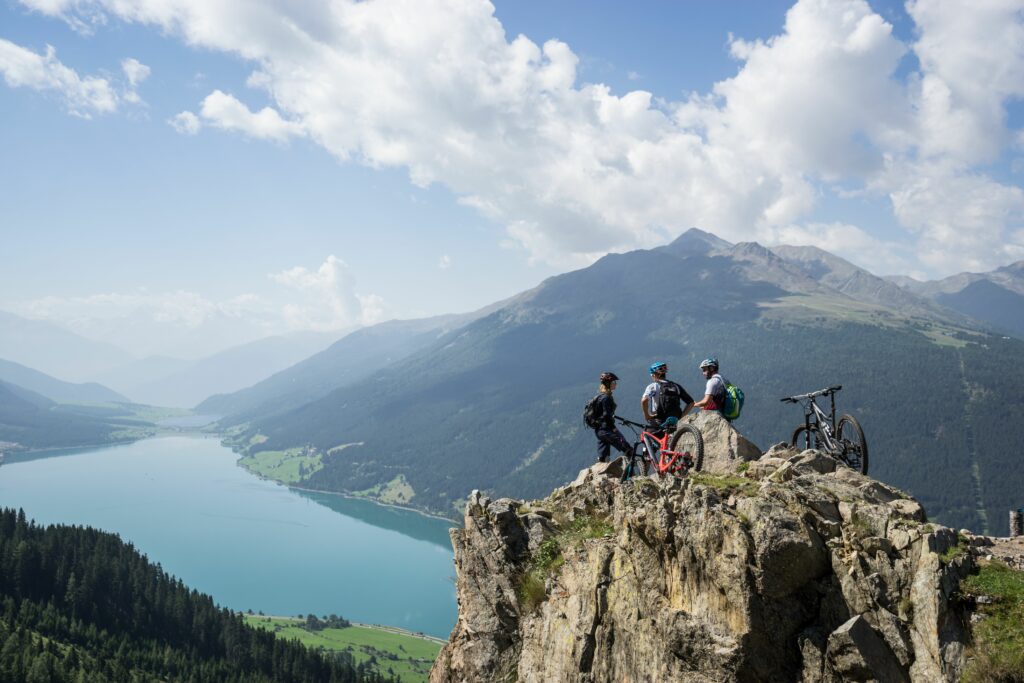
Cross-border travellers in the Allgäu Alps
If you want to hike for several days and repeatedly transcend personal and geographical borders, the “Grenzgänger” cross-border tour in the Allgäu Alps is just the thing for you. The 80-kilometre tour, which encompasses some 6,500 metres in elevation difference, not only leads along the Austrian and German border, but also criss-crosses it several times. Hikers switch between Tirol and Bavaria at least once a day – frequently much more often. The challenging tour leads between the Tannheimer, Hintersteiner and Lechtal valleys to idyllic mountain lakes, spectacular waterfalls, an imposing north face and spectacular mountain summit, offering a marvellous panorama all the way through. Overnight stays are spent in huts in the heart of the Allgäu Alps Nature Reserve, or in hotels and guesthouses in the small valley villages.
Cultural frontier encounters
A world cultural heritage sheep drive
The sheep drive, also known as transhumance, in the Ötztal Alps is an extraordinary border crossing and 6,000-year-old tradition. Every year, over 5,000 sheep from the South Tirolean Schnalstal Valley are herded from the dry and arid northern flanks of the Alps across the Ötztal Alps to Vent, to spend the summer grazing on its lush high pastures. The sheep drive crosses the Timmelsjoch (2,494 m), Hochjoch (2,885 m) and Niederjoch (3,017 m), making it the only cross-border transhumance in the Alps that traverses glaciers. Familial, social and cultural ties between the people of Südtirol and Tirol have developed over many generations, which is reflected in ancient rituals and customs still practised today. As the Ötztal transhumance is such a unique tradition, it was added to the UNESCO list of Austria’s intangible cultural heritage in 2011.
Scaling Germany’s highest mountain
The mighty Zugspitze is situated eleven kilometres southwest of Garmisch-Partenkirchen and six kilometres east of Ehrwald, with the border between Germany and Austria running along its western summit. At 2,962 metres above sea level, Germany’s highest mountain thus belongs to both the German state of Bavaria and the Austrian province of Tirol. This border crossing can be experienced directly when you pass the state border at the old customs house. Sunrise in Bavaria, sunset in Tirol – or perhaps vice versa? Both are possible, for example on the special sunrise tours on selected dates in summer, or the regular fondue evenings at sunset.
On the trail of the gorge genie
Leutascher Geisterklamm gorge on the border between Tirol and Bavaria is a seemingly endless adventure trail into the kingdom of the gorge genie. Since 2005, a steel walkway has led through the gorge, offering visitors the chance to discover the adventurous world of water and rock between Leutasch and Mittenwald. Since last summer, the family-friendly gorge has also featured a newly designed themed trail, which leads through the gorge in four different loops and tells captivating stories, offers numerous games and interesting facts as well as a spectacular nature experience between the tumultuous waters and the idyllic mountain forest.
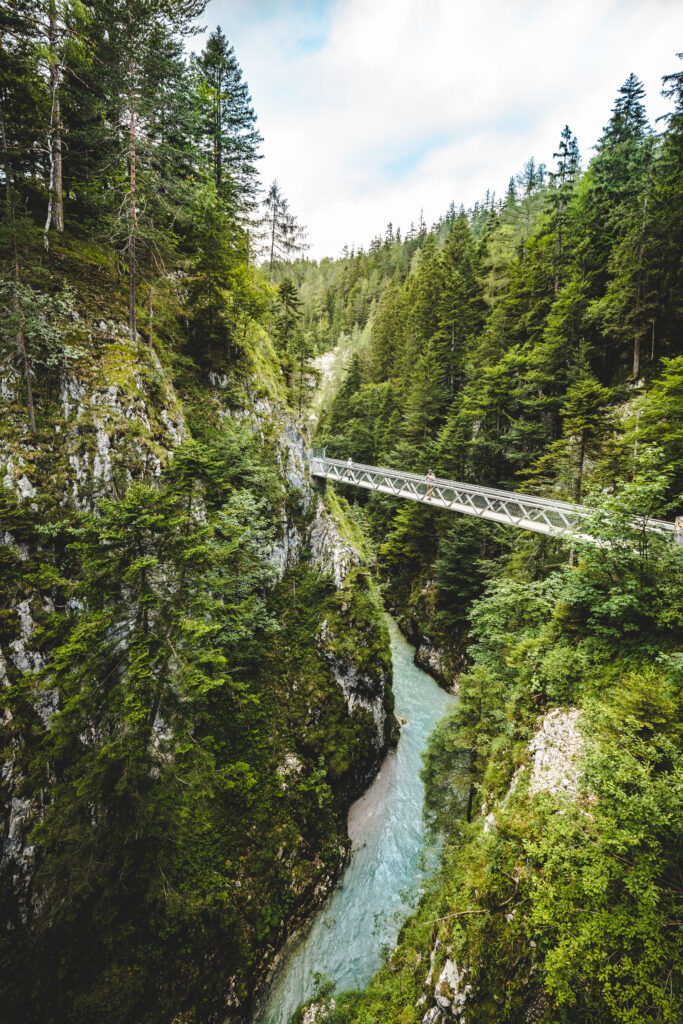
Panoramic tour over Timmelsjoch at 2,478 metres above sea level
It is Austria’s highest road border crossing and an unparalleled experience: a panoramic drive over the 2,478-metre high Timmelsjoch, which connects the Tirolean Ötztal with the South Tyrolean Passeiertal valleys. During the summer months, this spectacular, toll road leads past futuristic architectural sculptures that shed a fascinating light on nature, history, culture, society and the economy, while offering spectacular views of the mountains.
More information on cross-border attractions and experiences can be found at www.tyrol.com

